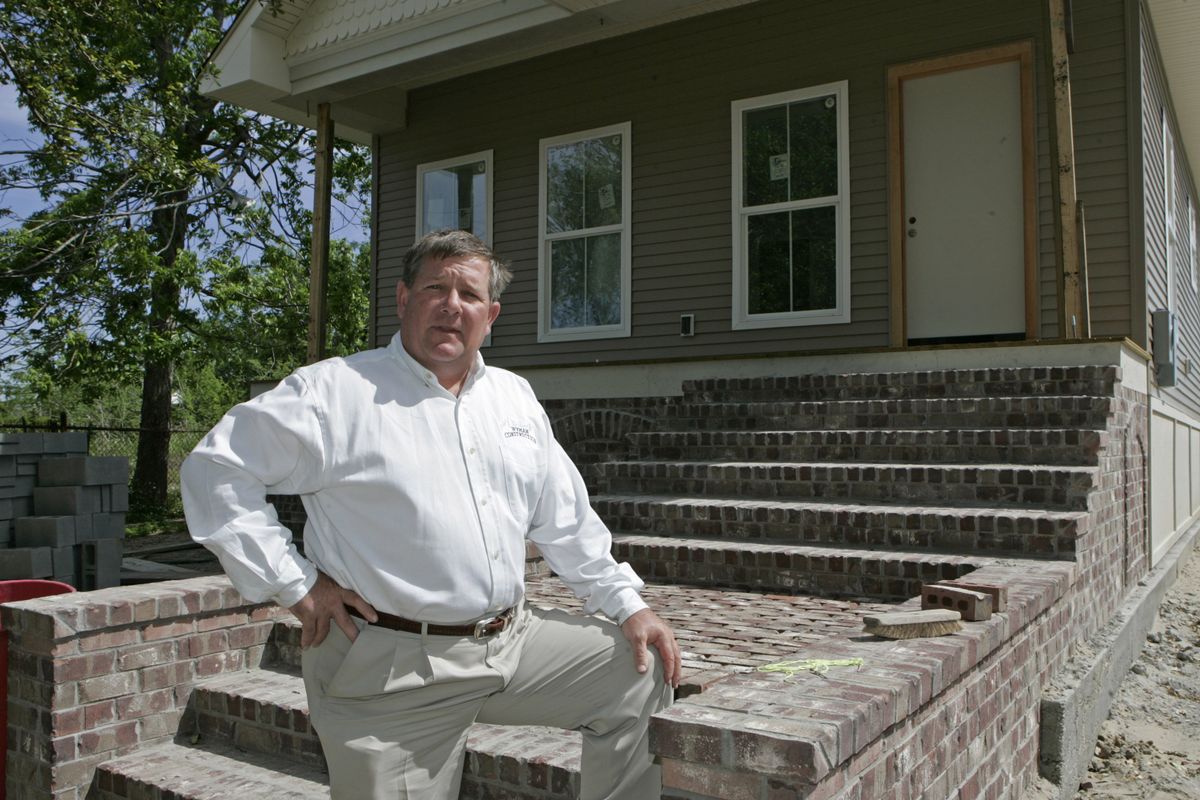Rebuilding projects, job market help Louisiana weather downturn

NEW ORLEANS – When Louisiana Gov. Bobby Jindal touts the state’s job market and New Orleans Mayor Ray Nagin sells his city as one of the best places to ride out the recession, it’s not just routine boosterism.
In the midst of a severe nationwide downturn, the Louisiana economy is holding up better than most. It’s a role reversal from a few years ago, when Louisiana was one of the country’s weaker states financially following the destruction caused by Hurricane Katrina.
The state has the 10th lowest unemployment rate and was the only state to add nonfarm jobs in February, the most recent month for which data are available. Sales tax collections in New Orleans have risen close to levels seen before Katrina. And foreclosure rates have remained low by national standards, in part because the state never experienced a housing bubble.
What’s unclear is how long the state can keep the downturn’s worst demons at bay. March state-by-state employment data, which the Labor Department releases Friday, will offer fresh insights.
The major reconstruction effort that continues more than 3 1/2 years after Katrina partly explains why Louisiana state has been fairly insulated from the worst of the recession.
To take advantage, Wes Wyman diversified his south Louisiana construction business after Katrina, adding home rehabilitation to his usual mix of residential and commercial work. “If you make it a job to find a job, you’ll find a job,” he said.
There are other factors that state officials probably wouldn’t brag about in better times, such as the relatively stagnant population and the lack of manufacturing jobs, which have been hard hit.
“It’s kind of a backhanded compliment,” said Peter Ricchiuti, assistant dean of the Tulane University business school.
But at a time when all states are struggling, any advantage helps. Consider:
•Billions of dollars in government-backed rebuilding projects are planned or under way following hurricanes Katrina and Rita in 2005 and Gustav and Ike last summer, and that’s cushioned the jobs market.
•Louisiana’s population has fallen an estimated 1.3 percent since the 2000 Census. That means less competition for jobs.
•Oil and natural-gas drilling, which is critical to Louisiana’s economy, hasn’t slowed as much as in other states since energy prices plummeted. Companies are reluctant to shut down expensive, high-volume projects off Louisiana’s coast; they are more likely to put the breaks on onshore drilling in other parts of the country, such as the Rockies, where the upfront investments aren’t as high and the payoffs may be smaller.
New Orleans has some advantages the more rural north Louisiana does not. Among them: a port, which helped insulate the city against the Great Depression, and its status as a global tourism destination.
And while Katrina left most of New Orleans under water and wiped out whole neighborhoods, the federal government has set aside billions for rebuilding homes, levees and other infrastructure. Nearly $15 billion has been committed to flood-protection projects in the region.
Ricchiuti said the city could be a good place to weather the U.S. downturn, as Nagin asserts, provided that the overall economy gets on a growth track by late this year or early 2010.
“If this recession were to linger, it would eventually take us as well. There’s no question about that,” he said.
The state’s February unemployment rate was 5.7 percent. Nationwide, the unemployment rate was 8.1 percent in February, and 8.5 percent in March, according to the Labor Department.
Louisiana’s unemployment rate has risen from 3.8 percent in February 2008, when the nationwide level was 4.8 percent.
The state has taken aggressive steps to try to offset the trickle-down effects of the recession.
State officials have keyed in on persuading businesses to stay and expand in Louisiana. The state is offering better trained workers suited to a business’ needs and potentially huge incentives to companies weighing a move here. The efforts, initiated before the economic crash, have taken on new urgency since.
Recently, state officials offered $50 million to try to keep a chicken processing plant and about 1,300 jobs in rural north Louisiana – $10 million more than the California-based company that would run the facility has offered to put into the deal.
The Jindal administration has proposed spending two-thirds of a $414 million “mega-fund” on four projects with much of the money helping retain existing jobs if lawmakers sign off on the plans.
Some have actually eyed the funds to fill holes in the state budget.
“The state is just doing way better than we anticipated,” said economist Loren Scott, who’s studied Louisiana for years.
That’s not to say there’s no cause for concern.
Nonseasonally adjusted unemployment for February was 10 percent or greater primarily in a cluster of northeastern parishes that are poorer, rural and have been hit by layoffs in sectors like wood products. And economists see vulnerabilities in auto manufacturing, chemicals, tourism and oil and gas. Some of those sectors have already shed jobs.
Big Mardi Gras crowds in February were considered a good omen for New Orleans. Whether businesses will cut back on attendance at conventions and corporate meetings remains to be seen.